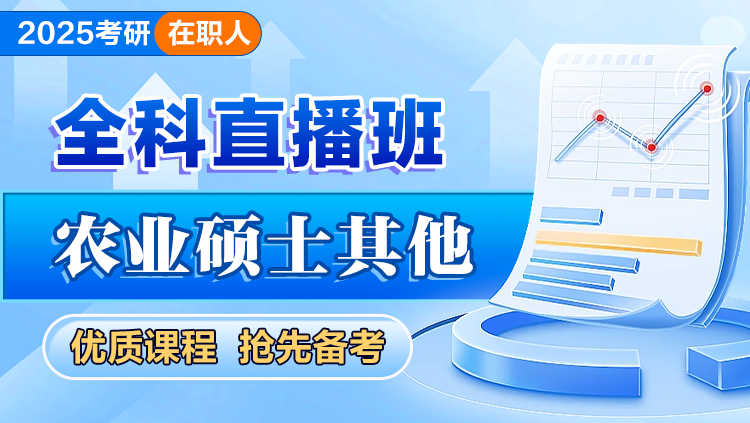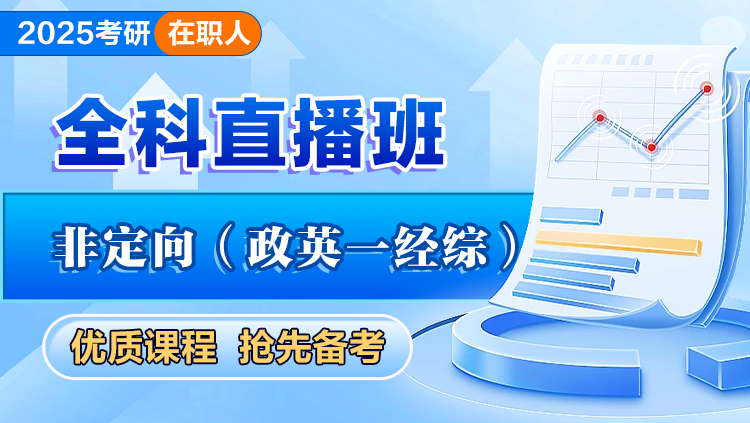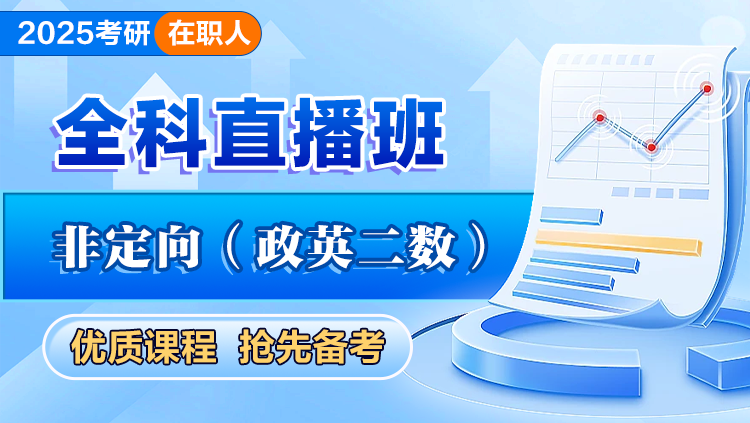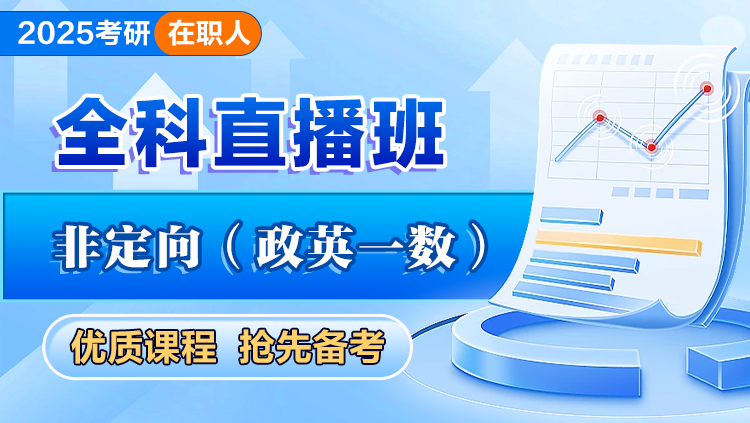2020考研复习已经接近了尾声,2021考研复习也提上了日程,近年报名考研英语的同学逐渐增多,为了使各位2021考研英语的同学更好的复习,中公考研网校小编为大家整理了"2021考研英语:精选阅读理解及答案(46)"的相关内容,希望对各位考生的复习备考有所帮助。
The use of heat pumps has been held back largely by skepticism about advertisers’ claims that heat pumps can provide as many as two units of thermal energy for each unit of electrical energy used, thus apparently contradicting the principle of energy conservation.
Heat pumps circulate a fluid refrigerant that cycles alternatively from its liquid phase to its vapor phase in a closed loop. The refrigerant, starting as a low-temperature, low-pressure vapor, enters a compressor driven by an electric motor. The refrigerant leaves the compressor as a hot, dense vapor and flows through a heat exchanger called the condenser, which transfers heat from the refrigerant to a body of air. Now the refrigerant, as a high-pressure, cooled liquid, confronts a flow restriction which causes the pressure to drop. As the pressure falls, the refrigerant expands and partially vaporizes, becoming chilled. It then passes through a second heat exchanger, the evaporator, which transfers heat from the air to the refrigerant, reducing the temperature of this second body of air. Of the two heat exchangers, one is located inside, and the other one outside the house, so each is in contact with a different body of air: room air and outside air, respectively.
The flow direction of refrigerant through a heat pump is controlled by valves. When the refrigerant flow is reversed, the heat exchangers switch function. This flow-reversal capability allows heat pumps either to heat or cool room air.
Now, if under certain conditions a heat pump puts out more thermal energy than it consumes in electrical energy, has the law of energy conservation been challenged? No, not even remotely: the additional input of thermal energy into the circulating refrigerant via the evaporator accounts for the difference in the energy equation.
Unfortunately there is one real problem. The heating capacity of a heat pump decreases as the outdoor temperature falls. The drop in capacity is caused by the lessening amount of refrigerant mass moved through the compressor at one time. The heating capacity is proportional to this mass flow rate: the less the mass of refrigerant being compressed, the less the thermal load it can transfer through the heat-pump cycle. The volume flow rate of refrigerant vapor through the single-speed rotary compressor used in heat pumps is approximately constant. But cold refrigerant vapor entering a compressor is at lower pressure than warmer vapor. Therefore, the mass of cold refrigerant ― and thus the thermal energy it carries ― is less than if the refrigerant vapor were warmer before compression.
Here, then, lies a genuine drawback of heat pumps: in extremely cold climates ― where the most heat is needed ― heat pumps are least able to supply enough heat.
1.The primary purpose of the text is to
[A] explain the differences in the working of a heat pump when the outdoor temperature changes.
[B] contrast the heating and the cooling modes of heat pumps.
[C] describe heat pumps, their use, and factors affecting their use.
[D] advocate the more widespread use of heat pumps.
2.The author resolves the question of whether heat pumps run counter to the principle of energy conservation by
[A] carefully qualifying the meaning of that principle.
[B] pointing out a factual effort in the statement that gives rise to this question.
[C] supplying additional relevant facts.
[D] denying the relevance of that principle to heat pumps.
3.It can be inferred from the text that, in the course of a heating season, the heating capacity of a heat pump is greatest when
[A] heating is least essential.
[B] electricity rates are lowest.
[C] its compressor runs the fastest.
[D] outdoor temperatures hold steady.
4.If the author’s assessment of the use of heat pumps (lines 1-4) is correct, which of the following best expresses the lesson that advertisers should learn from this case?
[A] Do not make exaggerated claims about the products you are trying to promote.
[B] Focus your advertising campaign on vague analogies and veiled implications instead of on facts.
[C] Do not use facts in your advertising that will strain the prospective client’s ability to believe.
[D] Do not assume in your advertising that the prospective clients know even the most elementary scientific principles.
5.The text suggests that heat pumps would be used more widely if
[A] they could also be used as air conditioners.
[B] they could be moved around to supply heat where it is most needed.
[C] their heat output could be thermostatically controlled.
[D] people appreciated the role of the evaporator in the energy equation.
[答案与考点解析]
1.【答案】C
【考点解析】这是一道中心主旨题。本文的第二、三、四段描述了“heat pumps”的相关物理原理,第一、五、六段谈到了影响“heat pumps”应用的原因。由此可见本题的正确选项应该是C。考生在解题时一定要对全文的整体结构有所认识,并将各段的主题句联系起来加以理解。
2.【答案】C
【考点解析】这是一道段落间关系题。通过题干中的“the question of whether heat pumps run counter to the principle of energy conservation”可迅速确定本题的答案信息来源应该在第二段,因为第一段就是本题的题干。通过仔细阅读原文可发现本题的答案信息来源在第二、三、四段,在这三段中本文作者为解决相关问题给出了“relevant facts”(相关事实)。可见本题的正确选项应该是C。考生在解题时一定要注意段落之间的相互关系。
3.【答案】A
【考点解析】这是一道审题定位与反推题。通过本题题干中的“heating season”可迅速将本题的答案信息来源确定在尾段,因为尾段中的“extremely cold climates”暗示出“heating season”。通过仔细阅读和理解尾段并且进行相应的推导就可得出本题的正确选项A。考生在解题时首先要具备审题定位的能力,另外在解题时不能仅仅停留于字面含义,要多动脑子进行合理的推导。
4.【答案】C
【考点解析】这是一道归纳推导题。题干把本题所涉及的问题确定在第一段,而本文作者对于该问题的解释和说明确在第四段。通过对这两段的综合归纳推导,可得出本题的正确选项是C。由于作者在第四段的深刻解释帮助解决了人们心中的疑惑,但是这两段的深层含义暗示我们:人们在做广告时要避免使用超出消费者可信度的信息。考生在解题时要注意段落之间的联系,更要注意作者所要传递的深层含义。
5.【答案】D
【考点解析】这是一道审题定位与段落间关系题。通过题干中的“heat pumps would be used more widely”可迅速确定本题的题干来自于首段,在首段中我们也可以得知阻碍“heat pumps”被大家广泛接受的原因是“contradicting the principle of energy conservation”。在本文的第四段作者对第一段中所涉及的问题给出了合理的解释,指出“heat pumps”并没有“contradicting the principle of energy conservation”。问题出在人们对于“evaporator”缺乏了解。综合这两段的内容我们可得知:如果人们对“evaporator”有所认识,他们对“heat pumps”就不会心存疑虑,同时他们就会接受“heat pumps”,从而“heat pumps”就会得到广泛的利用。可见本题的正确选项应该中D。考生在解题时一定要注意段落之间的联系,更要注意反推即逆向思维的应用。
[参考译文]
热泵使用受到阻碍,主要是人们怀疑广告上所宣称的,热泵能够提供两倍于其所消耗电能的热能,这显然与能量守恒定理相悖。
热泵循环使用的是液体制冷剂,这个循环使得制冷剂在一个封闭环路内从液体到气体交替变化。循环开始时,制冷剂以低温低压的蒸气,进入一个电机驱动的压缩机。出了压缩机后,制冷剂变为高温稠密的气体,流经一个被称为冷凝器的热交换器,这个冷凝器把制冷剂的热量传送到一个气团。制冷剂就变成了高压冷却的液态,然后经过一个节流器,节流器使其压力下降。压力下降时,制冷剂就会膨胀并且使部分液体气化,制冷剂变冷。然后经过第二个热交换器即蒸发器,蒸发器把热量从空气中传到制冷剂中,使得第二个气团温度降低。这两个热交换器,一个在室内工作,另外一个位于室外,所以每个热交换器接触各自不同的气团:室内空气和室外空气。
制冷剂在热泵内的流动方向受阀门控制。当制冷剂逆向流动时,两个交换器就交换它们的功能。这个逆向流动的能力使得热泵对室内空气加温或冷却。
现在,如果在某些条件下一个热泵输出的热能多于其消耗的电能,则能量守恒法则受到挑战了么?不,丝毫没有:通过蒸发器进入了制冷剂循环的额外热能,可以说明能量平衡上的差异。
不幸的是,这里有一个现实的问题。热泵的加热能力随着室外温度的下降而减少,其减少是由于在固定时间内流经压缩机的制冷剂数量上的减少而造成的。热容量和制冷剂质量流动速率成比例:被压缩的制冷剂越少,加载到热机循环中传输的热量越少。在使用单速旋转式压缩机的热泵中,制冷剂气体的体积流动速率近似一个常数。但进入压缩机的制冷剂气体,其冷却的气体压力比热气压力要小。因此,冷的制冷剂气体质量,也就是它携带的热能小于在压缩之前比较热的制冷剂气体的质量。
这样,那么热泵存在的真正障碍在于:在极端寒冷气候地区,那里最需要热量,热泵却最不能够提供充足的热量。
以上就是中公考研网校为2021准备考研英语的同学准备的"2021考研英语:精选阅读理解及答案(46)"相关文章,了解更多2021考研英语复习资料到中公考研网校考研英语资料栏目。
相关推荐














 什么是2025考研?2025考研流程有哪些?
什么是2025考研?2025考研流程有哪些?

 京公网安备 11010802020593号
京公网安备 11010802020593号 电子营业执照
电子营业执照